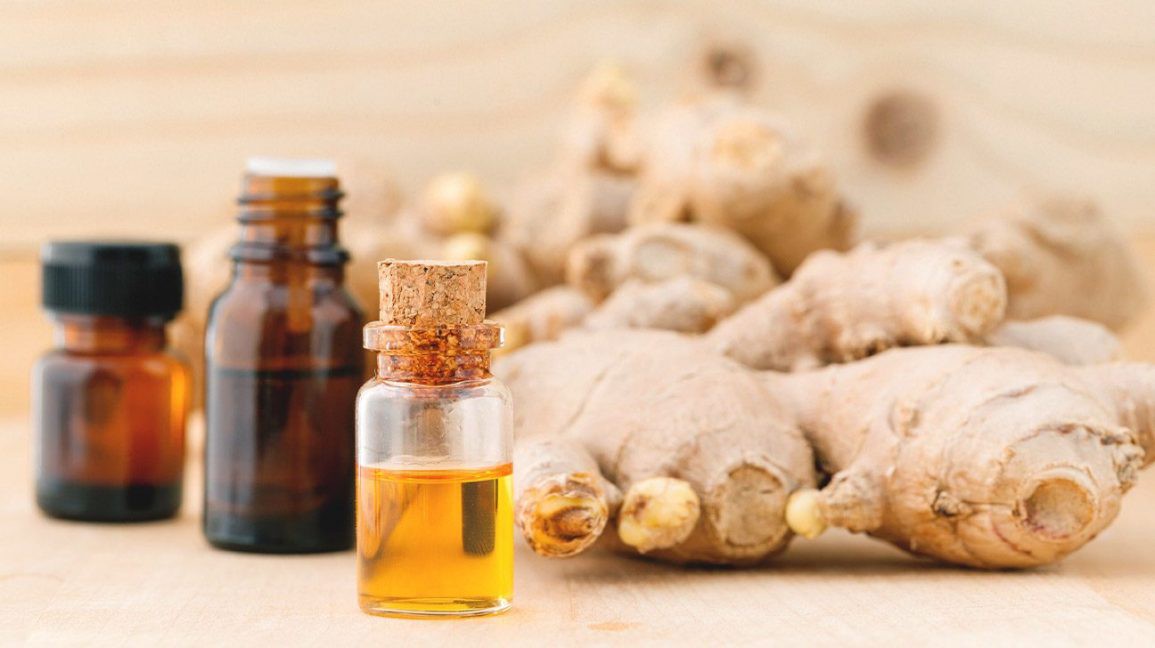
Ginger Oil is produced by steam distillation, occasionally by water-and-steam distillation of the dried, unpeeled, freshly ground rhizomes of Zingiber Officinale, It is one of those many essential oils that have helped human beings enormously in curing diseases related to, respiratory problems, menstrual disarrays, inflammations, heart strokes, and indigestion, nausea and stomach problems. Ginger is a prominent spice that was originated in India a long time back and this particular spice for its taste is much in request these days all across the world. It is very common in China & India and forms an important part of many Asian cooking due to its digestive properties. It is rich in various vitamins and minerals that are essential for proper running of the body. Due to its extensive use, its farming now has been supported so that it could be effectively used in provision of medicines and by products. Ginger essential oil can differ in color from pale yellow to a darker yellowish-brown color and the thickness also ranges from medium to watery. Also, it is strong tasting oil – spicy, shrill, warm and with a clue of lemon and pepper, that smells of real ginger.
Apperance:- pale yellow to yellow clear liquid (est)
Odor:- spicy woody terpenic warm ginger citrus
Specific Gravity:- 0.86700 to 0.87200 @ 25.00 degree C
Refractive Index:- 1.49000 to 1.89200 @ 20.00 degree C
Optical Rotation:- -47.00 to -28.00
Acid Value:- 6.00 max
Solubility:- alcohol , water, 204.9 mg/L @ 25 degree C (est)
Extraction:- The process done to manufacture this essential oil is conversion of carbon dioxide from its gaseous state to its liquid state and yields pure oil with no residual extraction chemicals.
Composition:- Ginger oil's yield is varying from 1.0 to 3%, depending upon the source of rhizomes . In addition to the essential oil's yields, the chemical compositions of ginger oils are affected from the source of rhizome, freshness or dryness and extraction methods.
Uses & Benefits:-
Ginger oil is used in perfumery to introduce warmth and certain nuances of spicy sweetness which are often wanted in heavy oriental bases and in a few floral fragrances, too. The interest in the oil for perfumery use has increased considerably during the recent years of the growing spice-trend” in men’s fragrances and in lotion perfumes in general.
Safety Precautions:-
Ginger has liver metabolism, therefore it rapidly eliminates from the blood after oral ingestion. According to monographs on fragrance raw materials (Research institute on Fragrance materials, 1972), the usual acceptance concentrations of ginger essential oil in soap, detergent, creams-lotion and perfumes are 0.01, 0.001, 0.005 and 0.08, respectively, while higher than 0.1, 0.01, 0.03 and 0.4% are not permitted in food. Ginger essential oil is approved by FEMA and FDA as GRAS for food uses.
Therapeutic Properties:-
Ginger CO2 essential oil is well known for its detoxing effect on the body systems while also being effective for diffusing pain and warming the tissues as it speeds micro circulation. This is also known as a remedy for coughs, colds, and any other systemic issues. Besides, it is also useful for upset stomach.